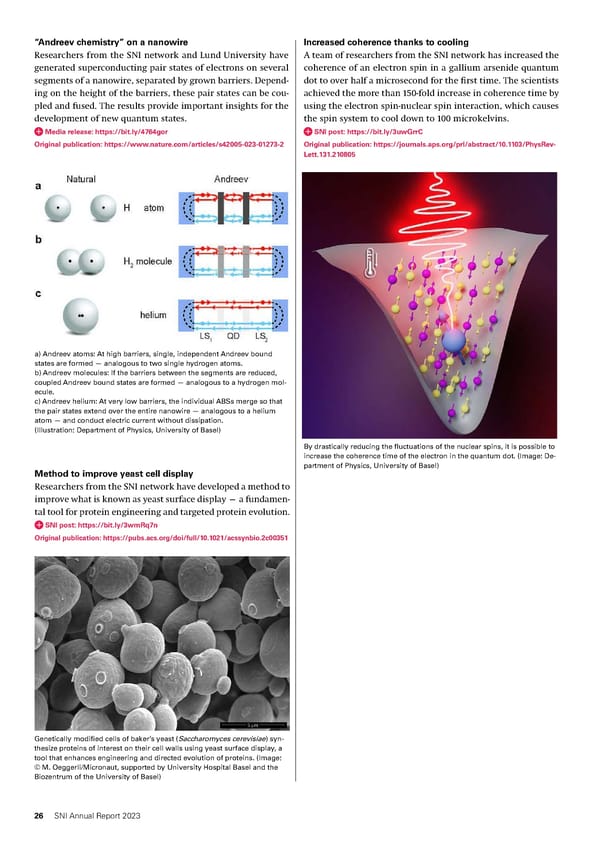“Andreev chemistry” on a nanowire Increased coherence thanks to cooling Researchers from the SNI network and Lund University have A team of researchers from the SNI network has increased the generated superconducting pair states of electrons on several coherence of an electron spin in a gallium arsenide quantum segments of a nanowire, separated by grown barriers. Depend- dot to over half a microsecond for the 昀椀rst time. The scientists ing on the height of the barriers, these pair states can be cou- achieved the more than 150-fold increase in coherence time by pled and fused. The results provide important insights for the using the electron spin-nuclear spin interaction, which causes development of new quantum states. the spin system to cool down to 100 microkelvins. Media release: https://bit.ly/4764gor SNI post: https://bit.ly/3uwGrrC Original publication: https://www.nature.com/articles/s42005-023-01273-2 Original publication: https://journals.aps.org/prl/abstract/10.1103/PhysRev- Lett.131.210805 a) Andreev atoms: At high barriers, single, independent Andreev bound states are formed — analogous to two single hydrogen atoms. b) Andreev molecules: If the barriers between the segments are reduced, coupled Andreev bound states are formed — analogous to a hydrogen mol- ecule. c) Andreev helium: At very low barriers, the individual ABSs merge so that the pair states extend over the entire nanowire — analogous to a helium atom — and conduct electric current without dissipation. (Illustration: Department of Physics, University of Basel) By drastically reducing the 昀氀uctuations of the nuclear spins, it is possible to increase the coherence time of the electron in the quantum dot. (Image: De- partment of Physics, University of Basel) Method to improve yeast cell display Researchers from the SNI network have developed a method to improve what is known as yeast surface display — a fundamen- tal tool for protein engineering and targeted protein evolution. SNI post: https://bit.ly/3wmRq7n Original publication: https://pubs.acs.org/doi/full/10.1021/acssynbio.2c00351 Genetically modi昀椀ed cells of baker’s yeast (Saccharomyces cerevisiae) syn- thesize proteins of interest on their cell walls using yeast surface display, a tool that enhances engineering and directed evolution of proteins. (Image: © M. Oeggerli/Micronaut, supported by University Hospital Basel and the Biozentrum of the University of Basel) 26 SNI Annual Report 2023
 Annual Report 2023 Page 25 Page 27
Annual Report 2023 Page 25 Page 27